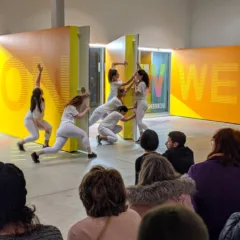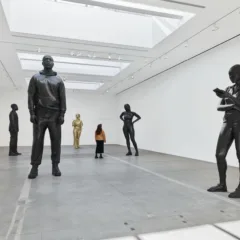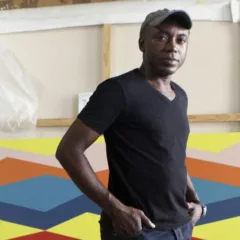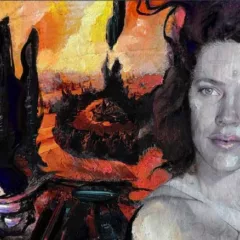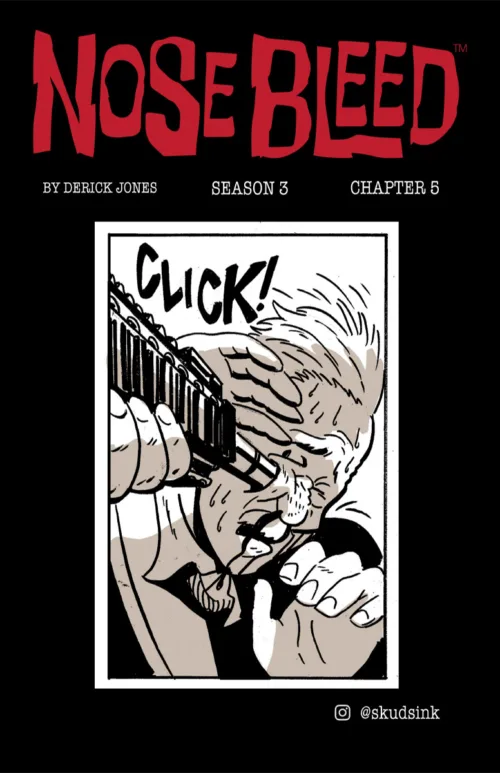Calibrating your trip into the mind and body of an exhibit
When entering into Tyler Kline’s ambitious installation, “Geistdenkenheit”, there is a calibration that the viewer needs to undergo in order to effectively join the cognitive and corporeal slipstream of well over 100 discrete sculptural objects, a series of interspersed klecksographic wall drawings and video. The adjustment can be made by reading Kline’s short essay, that allows for a correlation between the physical work in the exhibit and his underlying conceptual investigation, “to explore the relationships and differences between the artificial and biological”.
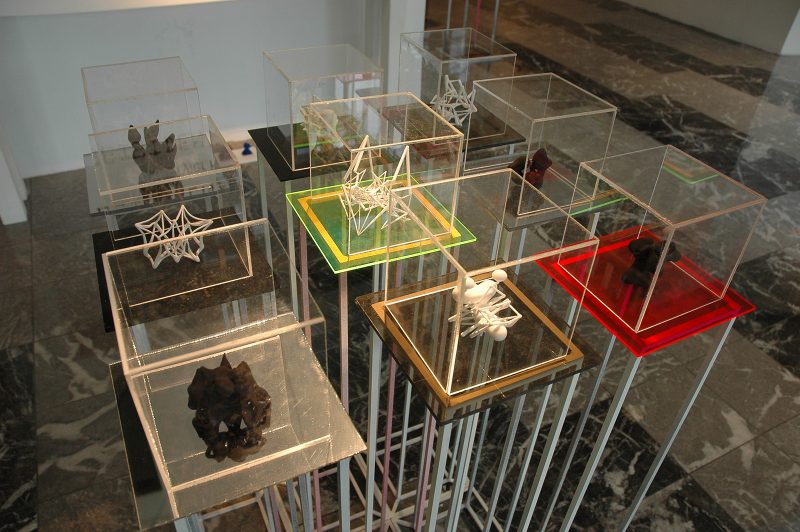
And with an unexpected quasi-literary twist, Kline uses his essay to propose a fictional character, Bravo Starkweather, who is the exhibit’s protagonist and possibly Kline’s alter ego. I should note that Starkweather does not actually appear in the installation as a representational image, but is proposed as a psychological surrogate and speculative vessel through which we can contemplate the artist’s query. Through this somewhat obtuse, yet clearly playful, mediation the work in the exhibit begins to unfold as the idiomatic language of Starkweather who is, by all accounts, the locus of Geistdenkenheit—a mind thinking. *
With his super hero-esque name, Starkweather is just the mediating device that allows us to enter into a speculative fiction, in which he opens a four way causal dialogue between the mind, the body, technology and art. On this note, Kline asks some pointed questions in his essay: “What is the shape and form of our thought”? “What is the aesthetic of our mind’s landscape”? “How is technology structuring the reach of our mind”?
Inkblot drawings and works that populate an open gallery space with peripheral noise
And with those questions in mind, the artist (with the viewer in tow) set off with Starkweather to contemplate an impressive and delightfully discursive array of inkblot wall drawings and sculpture in bronze, leaded glass, fabricated steel, plastics, wood, textile, various found materials (from an old soccer ball to bones and toenail clippings). His range of processes includes: 3D printing, metal fabrication, laser cutting, printmaking, drawing, video and glitch; completing a bricolage of experimentation and material explorations.
The anatomy of EKG is of a large open space, situated in the lobby of the Science Center building, with a field of 12” x 12” black and gray marble floor tiles that form an expansive grid on the floor. At its center is a modest-sized free-standing partition, around which the exhibition pivots. The peripheral foot traffic moving through the lobby skirts the somewhat foreboding and dimly lit exhibition, guided by a red velvet rope on stanchions that directs them away from the sculptures of human skulls, gun-like assemblages, laser cut modular sculptures and 3D printed objects.
Reminiscent of scale models for the crystalline César Pelli Cira Center, custom-made steel pedestals are distributed throughout the exhibit, comfortably occupied by numerous small sculptures. Reading as both architecture and experimental display cases these wire-form pedestals fit snugly into the geometry of the floor tiles bringing a sense of order; effectively anchoring a potentially distracting public space that is filled with peripheral noise and activity.
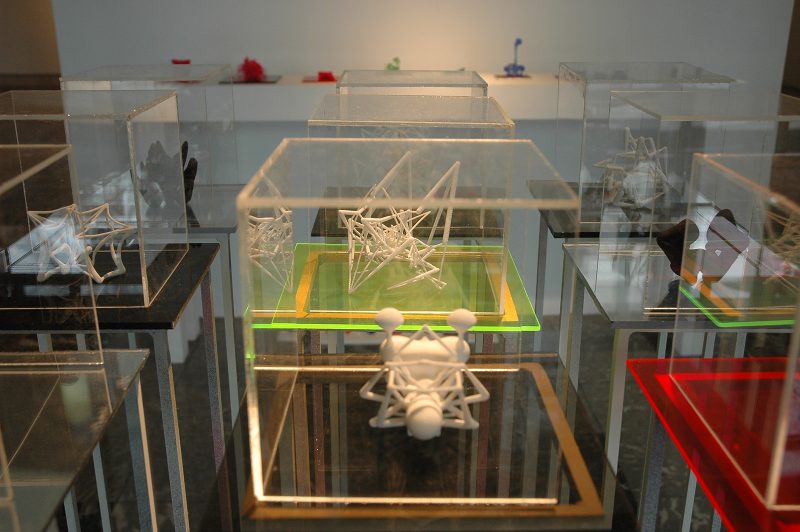
Neo Cortex Endosomes is comprised of a grid of nine pedestals, approximately waist high, holding as many hand-sized sculptures. As denoted by their title these 3D printed objects, each protected under a vitrine, mimic what a vascular cluster in our brain’s neocortex might look like. These precious sculptures have a physical and metaphoric elegance that exhibit Kline’s understanding, and appreciation, of the possibilities and limitations of 3D printing as a sculptural process. While the possibilities and limitations could be argued as one in the same, a 3D print is typically used as model or prototype for something else, a “maquette” rather than a finished sculpture. Because of this construct Kline’s sculptures, while not at all representational, read as a recent scientific discovery or maybe as teaching tools that would be used to delineate the unseeable interior workings of our mind.
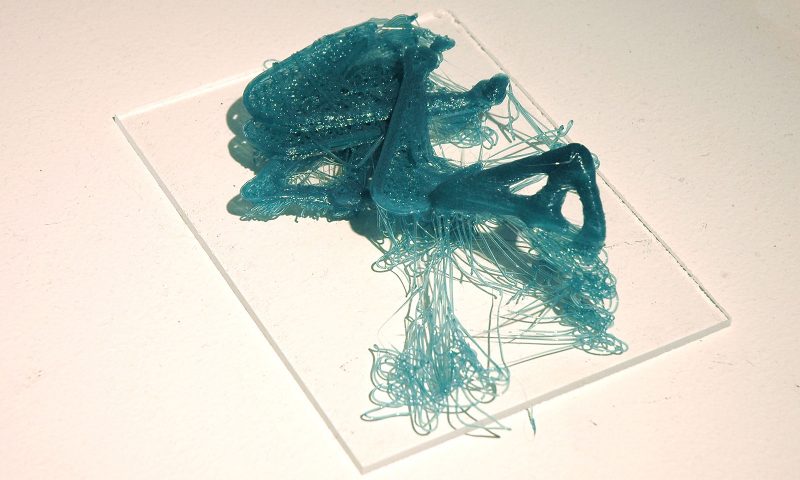
Adjacent to these works, Misremembering, a group of 15 similarly sized 3D printed sculptures, begins to push back against the perfection of the neo cortex endosomes. Rather than reflecting the technical prowess of the 3D printer, Misremembering enters “glitch” into the equation. These sculptures are partially deformed with nests of 3D printing filament piled and solidified after missing the proverbial digital mark. While simultaneously grotesque and uniquely beautiful, there is an apparent nod to a distinctly analog variable within a specifically digital process: chance.
The World’s Slowest 3D Printer
The notion of using chance as a binary disruption opens up the philosophical disceptation that Kline poses in his writing about the show, “the non-binary nature of biological intelligence vs. the binary-algorithm-controlled nature of artificial intelligence”.
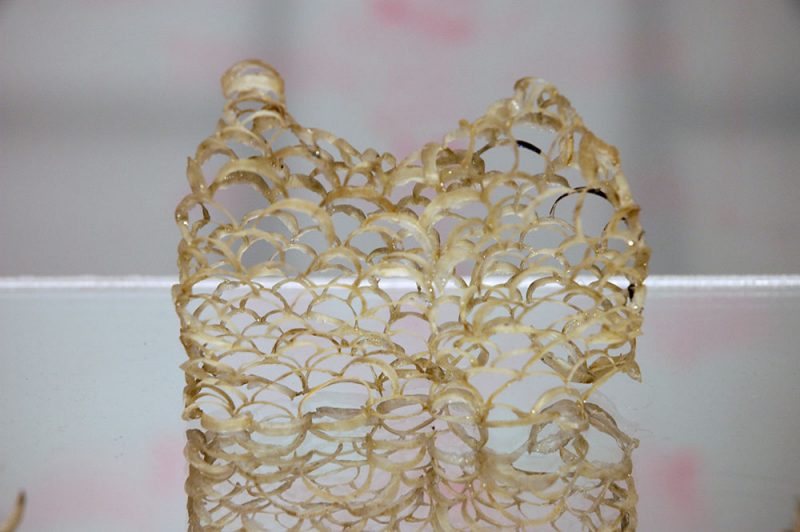
Kline’s poetic material explorations perpetuate this “vs.” throughout the exhibit and, in the case of Bone Ship, contrast the most primitive process imaginable with the technological sophistication of 3D printing. Bone Ship is partially comprised of a series of delicate sculptures fashioned from toenail and fingernail clippings culled by the artist from his own body. A possible reference to an art form that was developed by prisoners of the Napoleonic Wars who built models of ships from mutton and beef bones, these primitive toenail sculptures can almost read as pre-modern ritual 3D printing, with the body’s keratin in control of the slowest imaginable pace of production.
It’s as if Kline is demonstrating the fastest and most efficient and the slowest and least efficient way of making; while asking the viewer to consider the vast time, space, ethical and technological issues between those counterpoints.
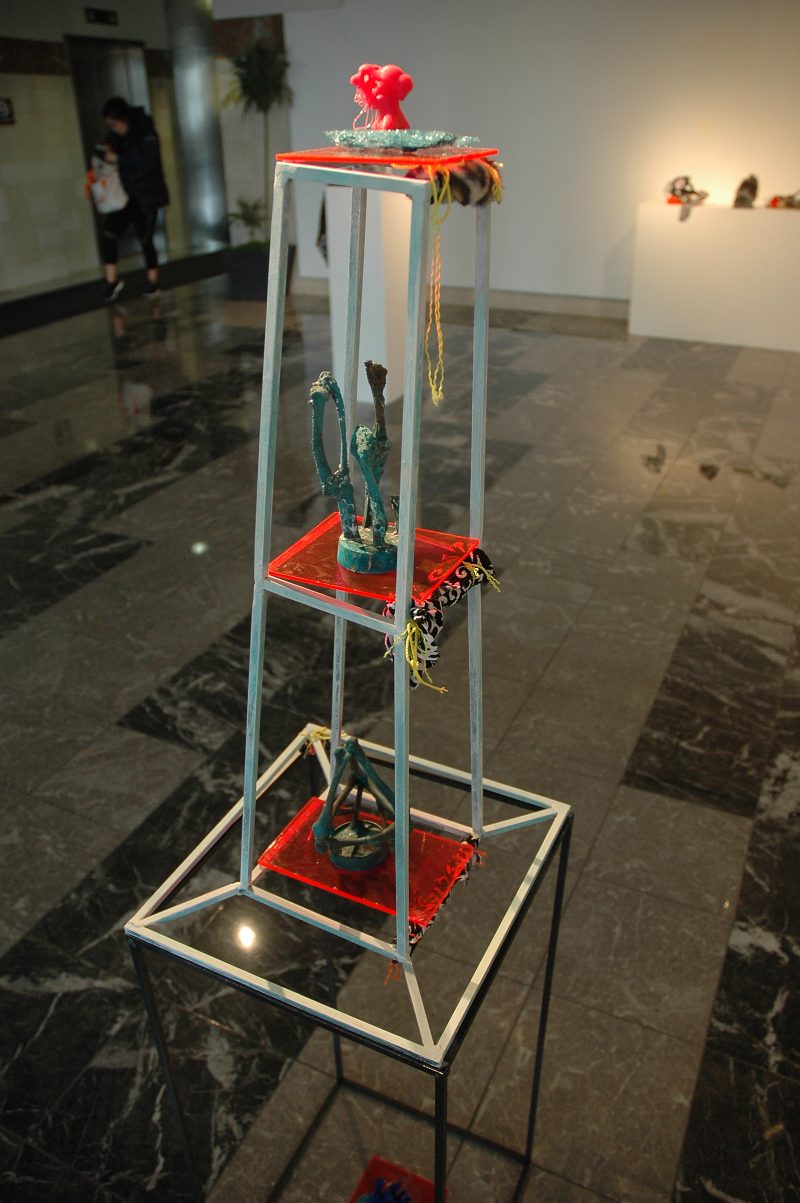
Bronze castings and 3D printed glitch art mix to raise questions about humanity’s future
Taking pause, and reminding myself of the poetic nature of Geistdenkenheit, I revel in the aesthetic and conceptual vibration that occurs in the sculpture titled III, in which a bronze object cast from chicken bones sits next to a 3D printed glitch art sculpture. Here, Kline continues to experiment with the pairing of disparate processes and images, contrasting bronze casting, which is an important marker in the history of civilization, with 3D printing, which is being pioneered right now to make everything from human organs to plastic tchotchkes and is yet to have defined its place in our creative history.
Amongst the bones and endisomes there is a strong sense of material irony in Geistdenkenheit, and just a smidgeon of sci-fi camp. Kline’s past/present sculptural juxtapositions convey his curiosity and optimism regarding the integration of artificial intelligence into our society at large, while also revealing an underlying anxiety, which is especially evident in his writing. In the end, I take away a palpable sense of urgency to make objects that connect our technological and biological selves, and would highly recommend this exhibit to anyone who has a desire to learn to cope with the profoundness of making art in a time when, as Kline writes, “technology is outpacing our philosophy of what it means to be human in the 21st century”.
Geistdenkenheit, Esther Klein Gallery, 3600 Market St., to March 25, 2017.
* From German (gist) translates roughly into “spirit” or “mind” and (denkenheit) translates into “thinking” i.e., Mind Thinking.


